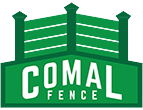
Table of Contents
What to Know Before You Set a Fence Budget
Installing a new fence is one of the fastest ways to add privacy, security, and curb appeal. But the right budget depends on material, length, height, terrain, gates, and local rules. As a San Antonio–area installer serving Comal County, New Braunfels, Canyon Lake, Bulverde, Spring Branch, and nearby communities for 30+ years, Comal Fence will help you map out costs clearly—so there are no surprises.
This guide breaks down typical price ranges by material, local factors that influence cost, the often-missed line itemsthat add up, and smart ways to save while protecting long-term value.
The Building Blocks of Your Fence Budget
When you request quotes, most installers think in price per linear foot. Your total typically includes:
Materials (posts, rails, panels/pickets, fasteners)
Labor & equipment
Gates & hardware (hinges, latches, operators)
Old fence removal & disposal (if replacing)
Site prep (clearing brush, setting posts, hauling)
Permits (when applicable)
Want to learn more about materials? See our service pages:
Typical Cost Ranges by Material (San Antonio–Area Reality Check)
Every property is different, but these ballpark ranges will help you shape a realistic budget. (Final pricing depends on height, style, gates, terrain, and access.)
Chain Link: usually the most affordable and quick to install. Good for pets/kids and large perimeters.
Wood (Pine/Cedar): the privacy favorite. Pine is budget-friendly; cedar costs more but resists insects and lasts longer with proper care.
Vinyl: low maintenance and clean look; higher upfront cost than wood but minimal upkeep.
Wrought Iron/Steel: premium security + elegant style; often paired with masonry or as a front accent.
For national context on cost ranges, see the HomeAdvisor Fence Cost Guide (helpful for benchmarking):
homeadvisor.com/cost/fencing/install-a-fence/
Pro tip: Ask for good/better/best options in your estimate. It’s an easy way to compare trade-offs (e.g., pine vs. cedar, standard vs. decorative top, manual gate vs. automatic).
| Material | Per Linear Foot (Avg.) | Example: 100 ft Total |
|---|---|---|
| Chain Link | $10–$25 | $1,000–$2,500 |
| Wood (Pine) | $15–$30 | $1,500–$3,000 |
| Wood (Cedar) | $25–$45 | $2,500–$4,500 |
| Vinyl | $30–$50 | $3,000–$5,000 |
| Wrought Iron | $40–$70+ | $4,000–$7,000+ |
Notes: Ranges are typical estimates; final pricing varies by height, style, gates, terrain, and site access.
Local Factors That Move Your Budget Up or Down
San Antonio and the Hill Country present conditions that directly affect price:
Soils & Rock (Comal County)
Caliche and rocky ground require extra time and heavier equipment to set posts, which can increase labor.Drainage & Grade
Slopes or low spots may need deeper footings, stepped panels, or drainage rock. (Good drainage also protects your fence investment long-term.HOA & Neighborhood Standards
Materials, color, and height can be regulated by your HOA. Standards don’t usually increase material costs dramatically, but they narrow choices and may add finish work or specific hardware.Permits & City Rules
Some situations require permits (e.g., certain heights, special locations). Always verify with the City of San Antonio’s Development Services:
sanantonio.gov/DSD/Resources/ApplicationsAccess & Site Prep
Tight side yards, heavy brush, or limited truck access can extend install times.
| Expense | Typical Cost / Guidance |
|---|---|
| Fence Material | $1,500–$7,000+ (depends on material & footage) |
| Labor & Installation | ~50–60% of total project cost |
| Gate Hardware | Walk gate: $150–$1,000+ | Drive/auto gate: $2,000+ |
| Stain/Sealant (if wood) | $100–$500 (initial coat; maintenance every 1–3 yrs) |
| Old Fence Removal | $200–$600 (haul-off & disposal) |
| Site Prep / Rock Excavation | Varies by lot; allow contingency in rocky areas |
| Permits (if required) | $25–$100 (city rules vary) |
| HOA Submittal Fees (if any) | $0–$100 (check HOA guidelines) |
| Contingency | Add 10–15% to cover surprises |
Tip: Share HOA rules, gate counts, and footage when requesting quotes to tighten estimates and avoid change orders.
The “Hidden” Line Items Homeowners Forget
Most budgets miss these small-but-real costs:
Gates & Hardware: A simple walk gate can be modest; drive gates (especially automatic) add more for posts, operators, power, sensors, and keypad/intercoms.
Old Fence Removal: Haul-off and disposal keeps your yard clean but adds per-foot costs.
Finishes (wood): Stain/seal protects your fence and extends life—it’s money well spent.
Vegetation Trimming: Clearing vines/brush along the line speeds installation and reduces labor hours.
Rock Excavation: If post holes hit rock, allow contingency time for coring or relocating lines slightly.
Budget Scenarios You Can Use
Use these hypothetical scenarios to frame discussions and quotes (assume standard 6-ft height unless noted; these are examples, not bids):
Starter Privacy (Backyard Only)
Material: Pine privacy fence, one 4-ft walk gate
Yard length: ~100–140 linear feet (typical small/medium lot)
Expectation: Entry-level privacy at a lower upfront price; stain within 30–60 days for longevity
Upgrade Privacy (Cedar + Style)
Material: Cedar privacy, decorative top or horizontal style; 1–2 walk gates
Yard length: ~140–200+ linear feet
Expectation: Higher durability & richer look, lower maintenance than pine when properly sealed
Low-Maintenance Lifestyle (Vinyl)
Material: Vinyl privacy, color to match home; 1–2 gates
Expectation: Minimal upkeep, clean look, higher upfront cost, long service life
Function-First Perimeter (Chain Link)
Material: Chain link; add privacy slats if desired
Expectation: Budget-friendly, great for pets/kids, fast install; slats add cost and wind load
Front Accent + Backyard Privacy (Hybrid)
Material: Wrought iron/steel in front for style + cedar privacy panels in the back
Expectation: Curb appeal where it matters, privacy where you need it—balanced budget
Not sure where your property fits? Tell us your linear footage, number of gates, and material preference, and we’ll build a side-by-side estimate.
Start here: Contact Comal Fence
How to Lower Costs Without Regretting It Later
Homeowners often try to cut price at the wrong steps. Here’s how to save smart:
Prioritize Structure First
Strong posts and proper depth are non-negotiable—Texas heat and storms test every fence. Save on ornament, not structure.Right-Size Gates
Ask whether you truly need more than one walk gate, and confirm vehicle widths before committing to a large drive gate.Choose the Right Wood
Pressure-treated pine is affordable; cedar costs more but lasts longer. If you choose pine, stain/seal promptly to improve service life.
Learn more about wood fence options:
comalfence.com/residential-fencing/wood-fencing/Phase the Project
Fence the highest-priority sections first (back and sides), then add front or decorative upgrades later.Plan for Drainage
A few bags of drainage rock at posts and good grading can prevent rot, heaving, and warranty issues down the line.
Permits, HOA, and Texas Rules—What Still Applies
Even with expanded homeowner rights under recent Texas HOA reforms, your fence must comply with local law and HOA aesthetic standards where applicable:
City Requirements: Check San Antonio Development Services for height limits, easements, right-of-way, and permit triggers:
sanantonio.gov/DSD/Resources/ApplicationsHOA Guidelines: Many associations regulate material, color, height, and style. They typically can’t forbid a fence outright, but they can require certain looks. Bring your guidelines to your estimate meeting so we design once and build once.
Property Lines: Confirm your survey pins or lot lines to avoid encroachment disputes (and re-work costs).
Maintenance Costs to Plan For (So Your Budget Stays Honest)
Your first-year budget should include either time or dollars for basic care:
Wood Fences: Clean annually; stain/seal every 1–3 years depending on exposure.
Metal/Wrought Iron: Touch up paint on chips to prevent rust.
Chain Link: Rinse dirt/debris; check tension.
Gates: Lubricate hinges and latches; adjust if settling occurs.
Small, regular maintenance dramatically extends lifespan and preserves the look that adds value to your property.
When to Choose Wood vs. Chain Link (San Antonio Use Cases)
Choose wood when privacy, style, and neighborhood fit matter most. It’s the classic San Antonio backyard look—especially cedar.
Explore options:
comalfence.com/residential-fencing/wood-fencing/Choose chain link for function-first, budget-savvy perimeters, side yards, or large lots. Add privacy slats or landscaping if you want more screening.
See chain link details:
comalfence.com/residential-fencing/chain-link-fencing/
How to Get the Most Accurate Number (In 15 Minutes)
- Measure your fence line (or send a lot survey).
- Note the number of gates (and sizes).
- Pick a primary material (and a backup).
- Share HOA rules (if applicable) and any slope/rock details.
- Ask for good/better/best pricing and a written scope.
Measure your fence line (or send a lot survey).
Note the number of gates (and sizes).
Pick a primary material (and a backup).
Share HOA rules (if applicable) and any slope/rock details.
Ask for good/better/best pricing and a written scope.
Bring that to your estimate, and you’ll get a number you can act on—not a guess.
Ready for a Clear, Local Quote?
At Comal Fence, we build fences that survive South Texas heat, rock, rain, and HOA checklists—and we put everything in writing so your budget is clear from day one.
Free, no-pressure estimates
Precise scopes (materials, depth, gates, hardware)
Local expertise for San Antonio & Comal County homes
